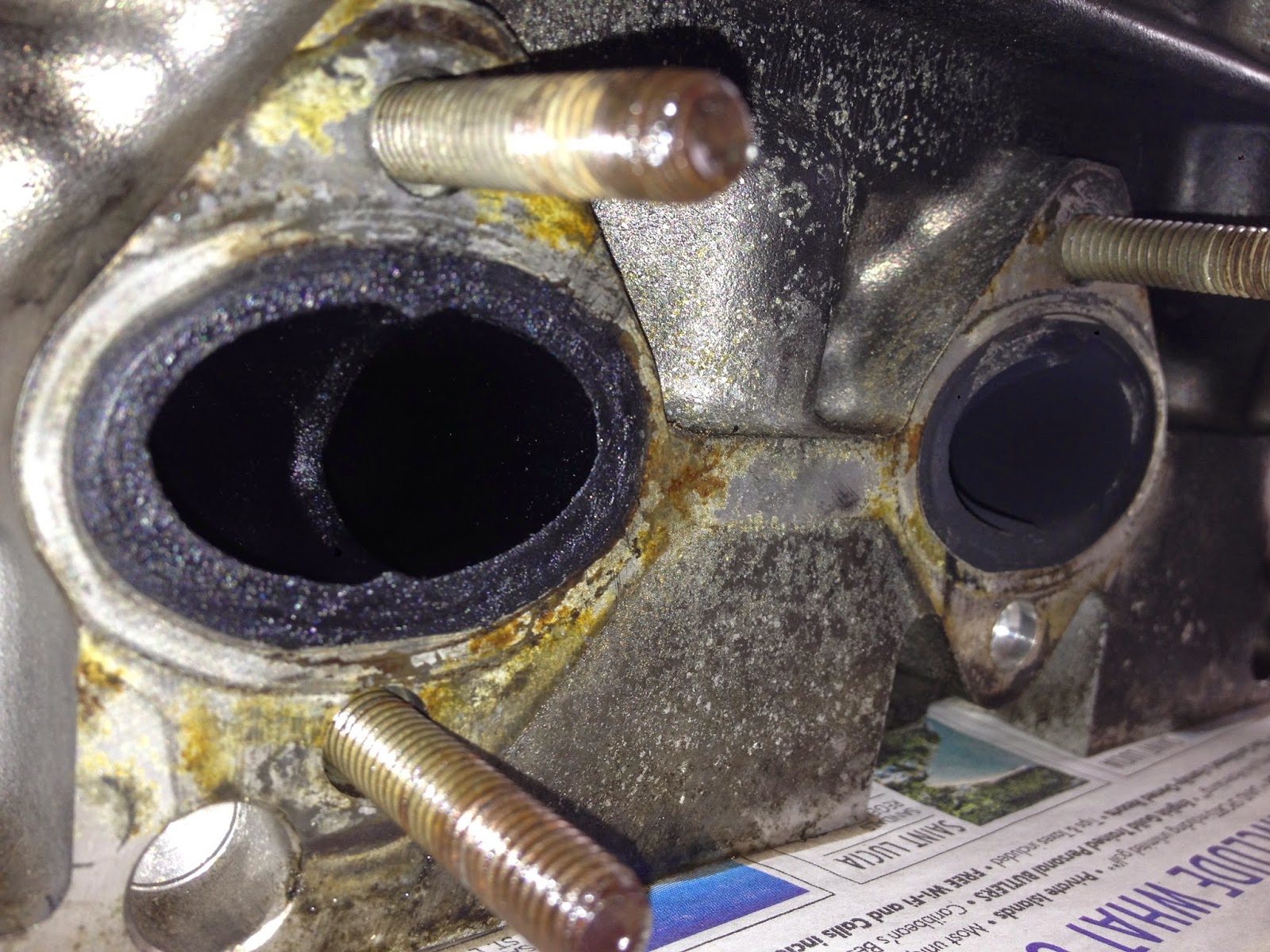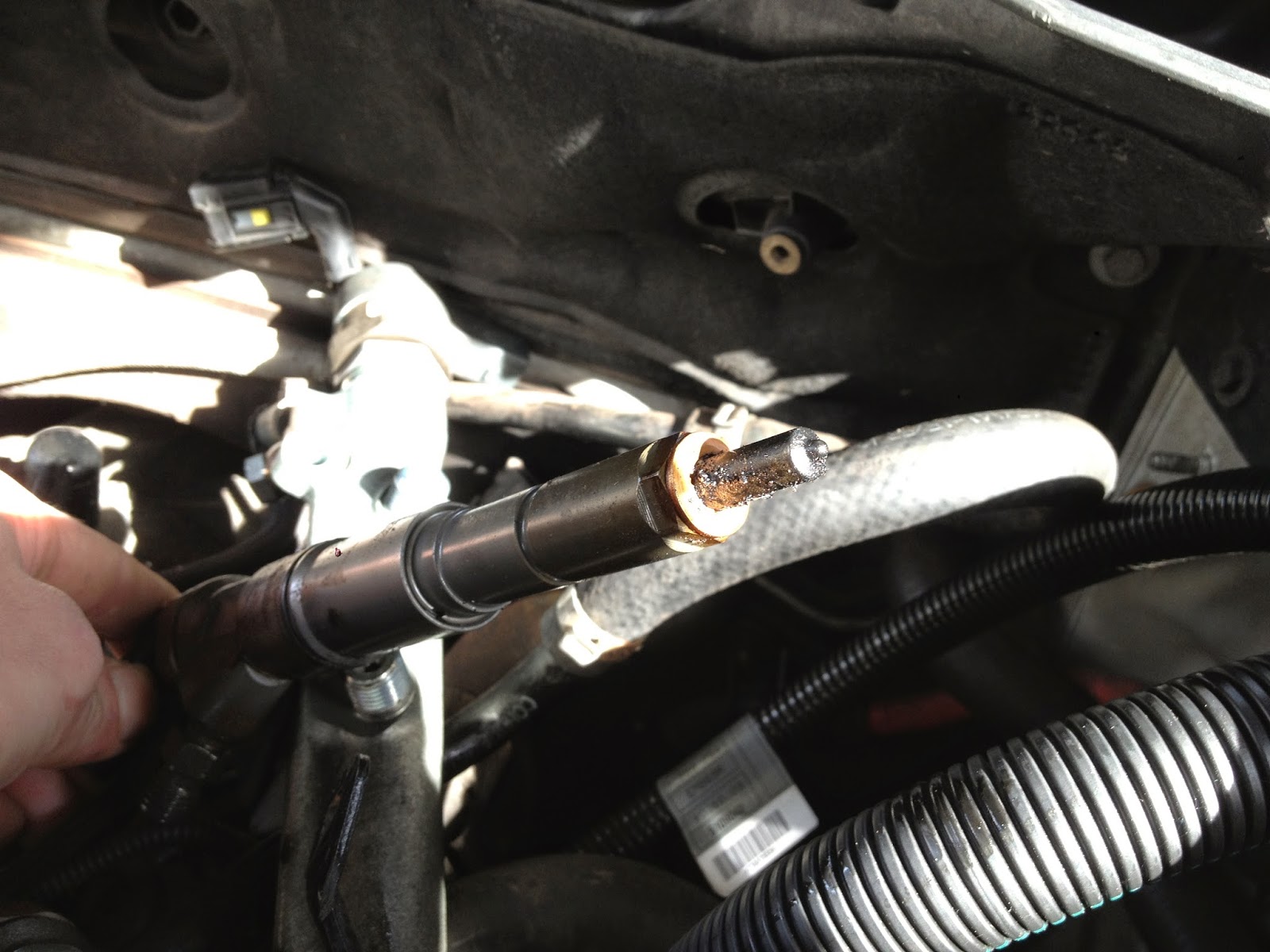I've covered 125 miles on the new head / ground piston since putting the engine back together last weekend and the car has performed great. However, I was checking the oil and finding it hardly showing on the dipstick. On Wednesday night I poured in another half litre of oil and it began to show on the dipstick, about one third up. It was in the same place the following morning, so I poured in another half litre, got it up to near max on the dipstick and carried on using the car. Almost immediately I could smell fresh oil from the heater / air-con. There had been no dropped oil for the first few days [engine under-trays still off], but there sure was now. A small patch every time I pulled up and stopped the engine. Some investigation revealed no oil to be leaking while the engine is cold, but once up to temp. it is a constant drip from underneath the turbo area and a few drips from elsewhere, mainly from oil running along the sway-bar and cross-members. Oil is also ending up in the air-intake and being burned by the engine. This is not good!
 |
| Oil is flying into the air-intake also, so the injector tips have become quite cruddy with oily residue. Nasty, though the nozzles remain quite clean and all 6 appear to be working OK. |
- Simply an overfill - oil-pressure is too high and leaking from multiple loose seals.
- Turbo oil-seal gone - oil is gushing from the middle of the turbo and getting into the inlet.
- Blocked CCV - the crankcase can't breathe is causing high oil-pressure and leaks.
- Complete turbo failure - bits of swirl-flap unbalanced the exhaust-wheel and wrecked the spindle, oil is now leaking from the centre-bearing and the blower is finished.
My plan of action is thus:
- Drain 2 litres of oil back out. [I can always put more back in.]
- Watch for blue-smoke developing. [None as yet, but a bit of white smoke on startup.]
- Get someone at work to check play in the turbo-spindle. [They say it's passable and a leaky turbo would give bad smoke, a broken one would be noticeable.]
- Replace CCV [crankcase-ventilator]. [eBay £37.50 delivered.]
- Replace oil-filter. [Euro Car Parts £5.99.]
- Replace copper-washers on turbo oil-feed pipe.
- Replace turbo... gulp.









































